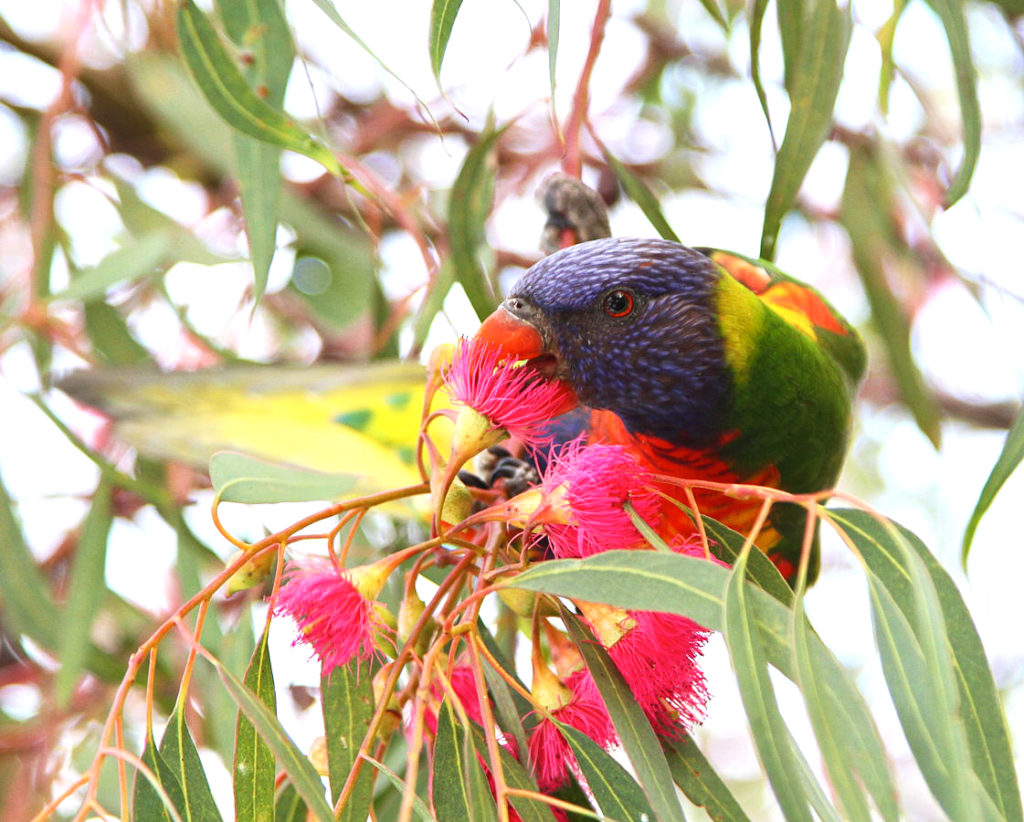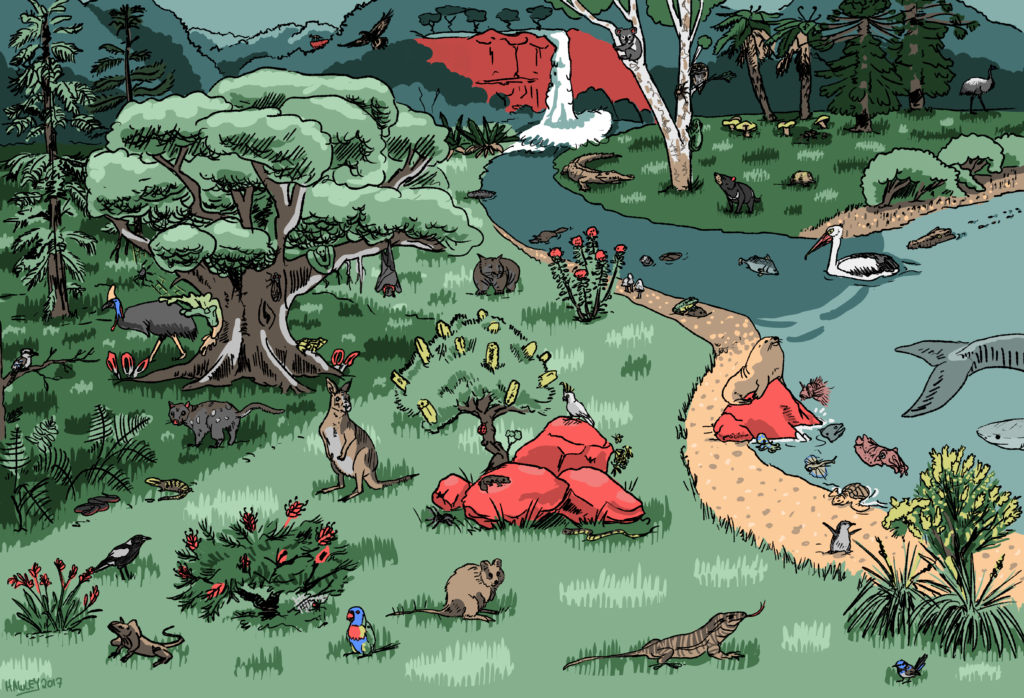The Atlas of Living Australia brings species information together from multiple sources (collections, universities and museums for example) to form the most comprehensive and accessible data set on Australia's biodiversity ever produced.
A Rainbow Lorikeet Trichoglossus moluccanus feeding at Adelaide Airport. Image: Edoddridge.
As you start your daily commute to work each day, do you stop to smell the wattle, or listen to the kookaburra singing, take note of the blue-tongue rustling in the bushes or perhaps marvel at unusual insects in your garden? It doesn’t matter if you live in the city, the outback, or the coast — biodiversity is all around us.
Biodiversity describes the variety of all living things in the natural world around us. By increasing our understanding of Australia’s unique biodiversity, we can look at the best ways to manage and protect it in a changing world. And while it’s important to improve our knowledge of Australia’s biodiversity, we also have to broaden the tools and techniques we use to expand that awareness.
This makes comprehensive and easy to access data vital. Without such information, obtaining reliable results or making sound decisions can be difficult. Thanks to rapidly evolving technology and publically accessible ‘big data’ capabilities, researchers can focus more on discovering answers to their biodiversity related questions, rather than wasting time searching for and managing data.
The Atlas of Living Australia (ALA), a facility hosted by us and part of our National Research Collections, brings species information together from multiple sources (collections, universities and museums for example) to form the most comprehensive and accessible data set on Australia’s biodiversity ever produced.
Founded on the principle of data sharing — collect data once, make it available, and use it many times, the ALA is now home to over 67 million records, has had over 10 billion records downloaded, and provides useful data to support a range of research activities. By aggregating biodiversity information and making it easily available online, scientists, planners, managers and others now have access to a more detailed picture of Australia’s biodiversity, its threats and future.
Here’s just a small sample of some iconic Australian species found in the ALA. How many can you name? Image: Jesse Hawley/CSIRO
What you might not know, is that the ALA is not just for research scientists, but also supports citizen-based contributions. So if you’re one of those people that said yes to stopping and smelling the wattle, listening to the kookaburra singing, or taking note of the blue-tongue in the bushes, then you too might be able to make a difference to the understanding and appreciation of our unique biodiversity.
Citizen-based contributions to mainstream science are becoming increasingly important and technology is helping facilitate this by enabling research data to be more accessible to everyone. Remember the recent discovery of an exoplanet system by an amateur astronomer in the ABC’s wildly popular Stargazing Live?
Here’s just a few ways you too can get involved in helping us better understand our wonderful biodiversity.
1. Record a sighting
Did you see something? Photograph something? You can upload your species sightings directly to the ALA. This adds to the pool of biodiversity occurrence records in the ALA and is used in scientific research, as well as helping inform policy and management actions for biodiversity. Your contributions are valued and important! Find out how you can become involved.
2. Check out ALA’s Citizen Science Central and Eco-science Project Hub
The ALA has developed BioCollect, a cloud-based platform that supports the capture and management of all kinds of field-based data by citizen and professional scientists, as well as natural resource managers and land carers.
Meeting the growing needs of both scientists wanting to engage the public in their research and the public wanting to participate in important scientific work, the ALA has also partnered with the Australian Citizen Science Association and now hosts the national citizen science project finder which is also linked to global project repositories. Find out more about ALA’s Citizen Science Central.
3. Join the community of over 1,000+ volunteers helping to digitise records
In partnership with the Australia Museum, the ALA has created Digivol, a crowd sourcing tool for digitising hand records into the ALA. Find out how you can get involved.
As we digitise our National Research Collections, we are making them available on the Atlas of Living Australia. Our digital collection is made up of photographs, 3D scans and X ray images of our specimens and their metadata. We also have a library of bird and wildlife sounds and collections of DNA sequences.
About the Atlas of Living Australia
The Atlas of Living Australia is Australia’s national biodiversity database. It provides free, online access to information about Australia’s amazing biodiversity. It supports research, environmental monitoring, conservation planning, education, and biosecurity activities, and is a great way to learn more about the biodiversity in your area. Find out more about the Atlas of Living Australia.
The ALA is made possible by contributions from its many partners. It receives support from the Australian Government through the National Collaborative Research Infrastructure Strategy (NCRIS), proudly hosted by us.




22nd August 2018 at 9:33 pm
I am experiencing an imbalance of pests and predators on my very small balcony herb garden. I need to be photographing and emailing photo’s of problem caterpillars etc to someone of experience. No spraying at present, just picking off the pests etc. Dont seem to be any Praying Mantis predators anywhere.
16th April 2017 at 10:00 pm
this is super .
13th April 2017 at 1:23 pm
Great article Hannah!
13th April 2017 at 8:15 am
Excellent idea